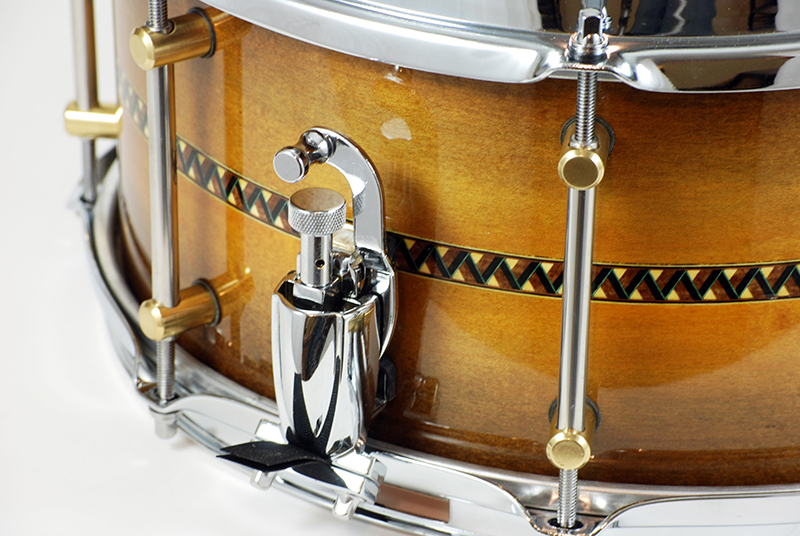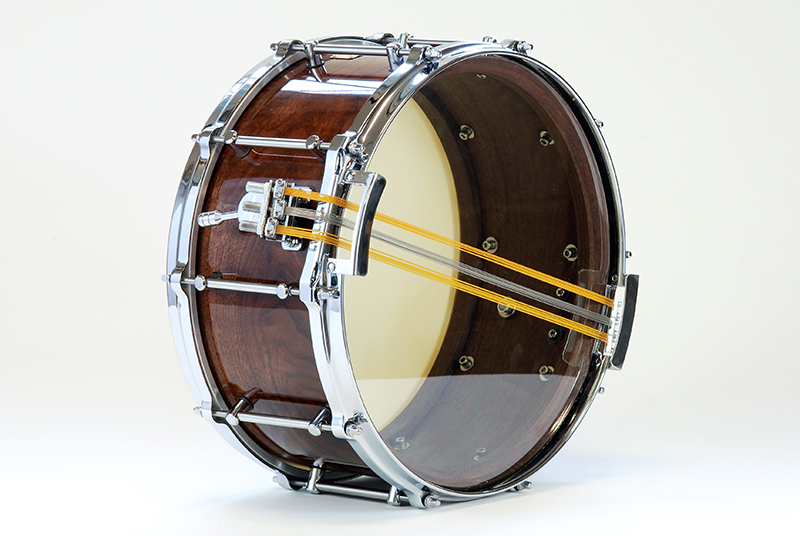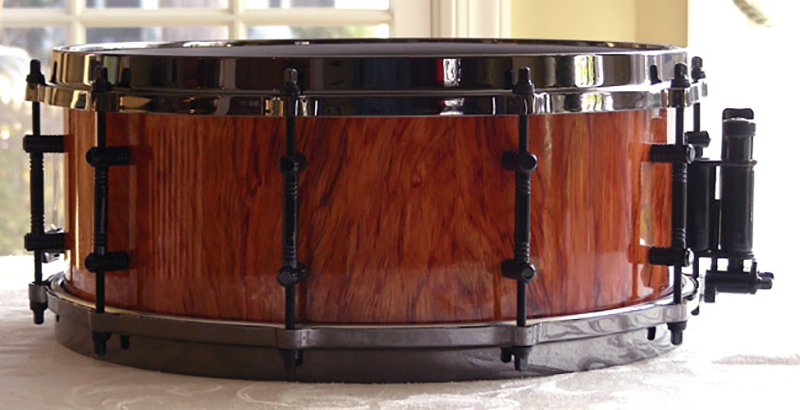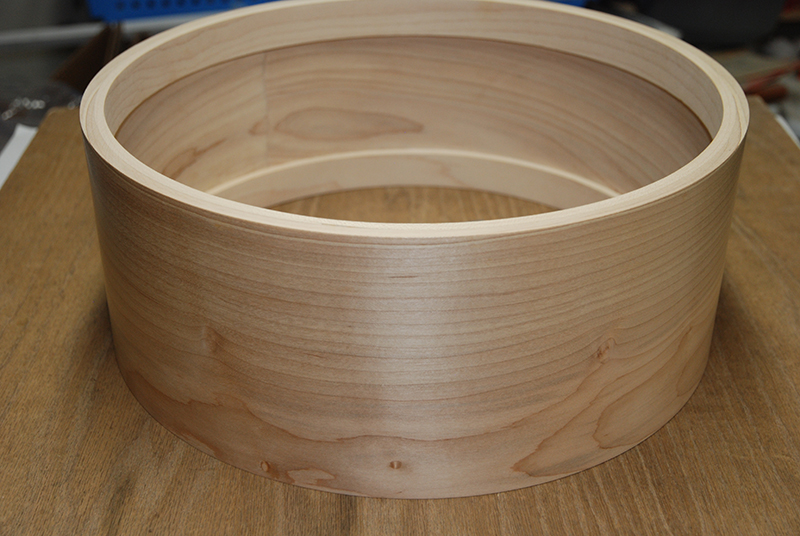Ritscher, drummer and drum builder from Osthofen sees himself as an "upcycler". He produces high-quality drums from old wood. He prefers to handle staves from old wine barrels.
Custom Drums: Really, Why So Pricey?
At one point in my life, I worked for an advertising agency – you know, the Mad Men thing. (Yes, there really were three-martini lunches.) A lot of prospective clients would ask us, in the course of getting acquainted, “How much is a brochure?” And the head of the agency would always answer, “How much is a car?” or whatever the client sold.
The answer depends completely on what kind of brochure, or car – or drum – you’re talking about. It’s all relative, and all about your needs, your goals, and your priorities.
My last article, about why custom work takes time, led me to another basic question: why custom drums cost what they do. You might find, or have found, yourself experiencing sticker shock over the price of a custom kit or snare. But usually that’s about expectations; you may be comparing the price to mass production drums, or you may be comparing the price to doing it yourself. But, in either case, why the difference? Let’s take the case of custom vs. mass-produced. Really, when you stop and think about it, why can’t the small, independent companies get the job done for less than the big guys? They’re not carrying the payroll, advertising expense, or sales teams. They’re not paying for big facilities or a huge stockpile of parts.
So why can’t they make a drum for less? It’s largely a question of scale and capital investment. A big company can commit lots of money to major orders from a supplier, and they may even have a financial interest in the supplier’s operation. Being that important to a supplier means they’re in a position to negotiate very favorably on terms and pricing. There are also advantages in limiting the choices – a major manufacturer is rarely going to offer more than a couple of lug styles, and usually only a few shell types, allowing them lots of inventory without the risk that it’ll sit on the shelf unused. So ordering ten lugs (small inventory, wide selection) produces a very different per-unit cost than ordering ten thousand lugs (big inventory, narrow selection) does; the pricing advantage goes to the big guys.
And, yes, the large manufacturer’s investment in tools and equipment is enormously higher. But paying for those investments has to come out of sales, so the smaller shop’s equipment cost might be divided over a few hundred kits sold over a period of time, while the big brand’s investment is covered by thousands of kits over a similar period, lowering the cost each sale needs to cover.
And then, of course there’s the question of labor cost. A big manufacturer needs to maximize efficiencies and minimize hours in order to meet a specific competitive selling price. A small builder, on the other hand, may want to put in more time because it allows the most effective end result for him, or because he’s addressing details that are not cost-effective for mass production, or even because he loves the actual hands-on process more than the business-operation side. I remember a conversation with a builder who told me he could wrap an entire kit in under an hour – and my reaction was, “What’s the fun in that?”
That brings me to custom vs. do-it-yourself. In this case, the comparison just isn’t fair. Yes, you can say that DIY is a way of saving all that labor cost, but it’s not exactly an apples-to-apples thing. You may have tools to build with, but the odds are good that the builder has tools that are more precise, more controlled, and better set up than yours. And in many cases, the builder may have access to parts, materials, or services that you simply can’t get.
Admittedly, doing it yourself saves on the overhead even a small builder has to cover – dedicated work space, maintaining shop materials, financing cash flow, managing bookkeeping and correspondence, website, etc.
But in terms of labor, the number of hours is only part of the story. A good custom builder brings a lot of background to your order. He’s seen different grades of parts and knows the ins and outs of working with them. He knows dozens of nuances about fitting and finishing, and the behavior of materials and shapes over time. He knows how to make design decisions to help get you the sounds and performance you want. It’s part of what he charges for – expertise that gets you much more than just a drum. Yes, you can put it together yourself, and you can even farm out some services like edging, drilling, and wrapping, but a good custom builder brings much more to the equation and the end result is not the same, even though the parts might be. So when you judge the price of a custom drum or kit, don’t evaluate it in the context of the price of a mass-production item or the cost of doing it yourself. Judge it in terms of its value to you – if it costs more, are you getting more? Is it better quality, better designed, or more exactly what you want? Does it perform better, feel better, or sound better? If the answer is yes, you may actually be getting more for your dollar from custom drums.





